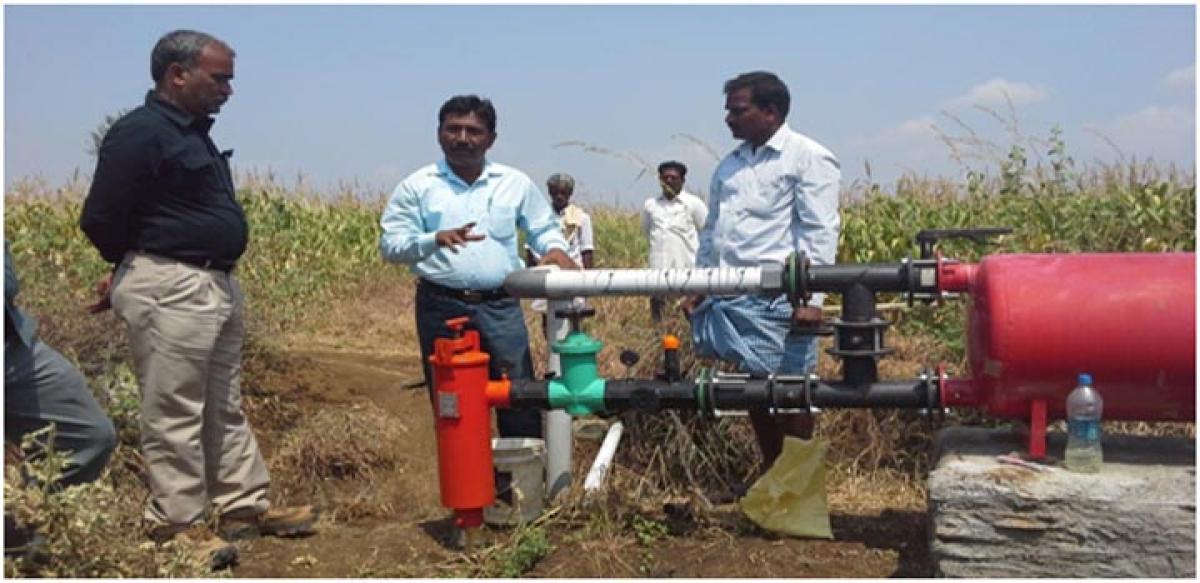Live
- Tensions Mount In Manipur As Missing Meitei Man Sparks Protests
- Allahabad High Court To Review Dual Citizenship Allegations Against Rahul Gandhi
- Tollywood mourns the loss of lyricist Kulasekhar
- Labourer's Mortal Remains Negligently Disposed Four Arrests Made Thus Far
- How Businesses Can Encourage Innovation And Collaboration In Diverse Workforce
- City Teenager Recovers from Rare Rickettsial Meningoencephalitis
- WHO-IARC twisted data -CAMPCO chief
- Karthikeya unveils title logo of ‘Abadameva Jayathe’
- Gaddar’s final masterpiece ‘Ukku Satyagraham’ set for Nov 29 release
- Chandrababu unveils plans for deep technology Iconic Building in Amaravati
Just In

Horticulture is a major sub sector of agriculture sector and important for its growth. Horticulture is a significant contributor to the economy by generating employment to unskilled and semiskilled rural poor.
Horticulture
Horticulture is a major sub sector of agriculture sector and important for its growth. Horticulture is a significant contributor to the economy by generating employment to unskilled and semiskilled rural poor. As per the 1st Advanced Estimates, horticulture crops are grown in an area of 7.01 lakh hectares in 2015-16 producing about 74.79 MTs output. Of the total horticulture cultivated area, fruits constitutes around 54.5%, followed by vegetables and spices with 22.2% and 19.1% share respectively. Floriculture constitute about 0.4% of area under horticulture. Out of the total production of horticulture in 2015-16, fruits constitute around 55% followed by vegetables, spices and flowers with 36%, 8% and 0.2% respectively (see Figure 3.8).
Table 3.8: Distribution of Area and Production among the Horticulture Crops
Out of the total horticulture area, highest area is covered by mango with 29%, followed by mosambi (sweet orange) 19%. Among vegetable crops tomato and onion cover around 33% and 15% of the area respectively and 39 % and 16% of production under vegetable. Among spices, the turmeric and red chilli covers around 41% and 31% of the area and 55% and 20% of production respectively. Among flowers, marigold covers around 50% of the area and 65% of production.
Major Schemes for promotion of Horticulture in Telangana:
1) Micro Irrigation Project: The major objective of the Micro Irrigation scheme is to achieve more productivity with less water through micro irrigation system. In addition, micro irrigation benefits farmers with less fertiliser, pesticide use, labour cost. Estimated monetary benefits accruing through micro irrigation in the State is given in the Table 3.10.
Table 3.10: Impact evaluation on of the Telangana State Micro Irrigation Project
1 Area covered 5.33 lakh ha (13.17 lakh acres)
2 Additional productivity Rs.790.20 Cr @ Rs.6000/- per acre
3 Labour Saving Rs.263.40 Cr @ Rs 2000/- per Acre
4 Fertilizer & Pesticides Saving Rs.131.70 Cr @ Rs 1000/- per Acre
5 Energy saving Rs 171.21 Cr @ Rs 4/- per Unit
6 Water saved (145.4 tmc) Rs 13,170 Cr @ Rs1.00 lakh /Acre)
Recognising the importance of micro irrigation, subsidy is extended upto 5 hectares of land to all categories of farmers as compared to the earlier limitation of Rs. 1.0 lakh subsidy per family with coverage of 1Ha in erstwhile Andhra Pradesh.100 percent subsidy is being provided to farmers belonging to Scheduled Castes and Scheduled Tribes, 90 percent to small and marginal farmers and 80 percent to other farmers. Farmer having once availed subsidy under MIP, is eligible for fresh sanctions after a period of 5 years. During the year 2015-16,it is proposed to cover an area of 39,620 hectares and so far about 36,852 hectares is covered under the scheme.
Box 4. Success Stories through use of Drip Irrigation
| Box 4. Success Stories through use of Drip Irrigation | ||||||||||||||||||||||||||||||||||||||||||||||||||||||||||||||
| ||||||||||||||||||||||||||||||||||||||||||||||||||||||||||||||

© 2024 Hyderabad Media House Limited/The Hans India. All rights reserved. Powered by hocalwire.com











